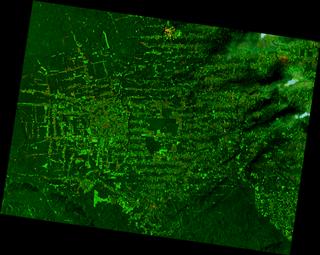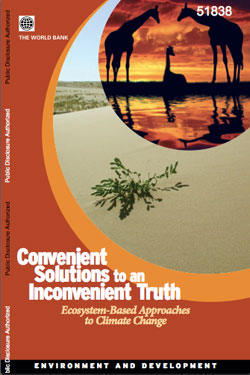Investments in protecting and managing biodiversity are key to helping the world slow and adapt to climate change, said a World Bank ecologist speaking last month at the Association for Tropical Biology and Conservation meeting in Sanur, Bali.
Kathy MacKinnon, Lead Biodiversity Specialist, said that while the World Bank has long been criticized by environmentalists for damaging infrastructure projects, the bank is “mainstreaming” biodiversity conservation in its development agenda, seeing it as a way to reduce costs and risk.
She highlighted recent examples of World Bank investments in flood control, coastal protection, and watersheds, and noted the World Bank has been one of the largest funders of biodiversity conservation, investing and co-financing some $6.5B in 624 projects across 122 countries between 1988 and 2009.
 The World Bank granted, but later suspended, a quarter of a billion dollar loan for the Polonoroeste Project in Rondonia, a state in the Brazilian Amazon in 1985. The project turned vast areas of rainforest and indigenous land into cattle ranches. A Landsat-7 image of Rondonia, Brazil, taken on February 7, 2001. Courtesy of NASA. |
The World Bank is currently investing billions a year in infrastructure, a figure that will grow under climate change mitigation and adaptation strategies as counties seek to protect coastlines, water supplies, agriculture, and existing infrastructure. MacKinnon said the bank is looking to capitalize on opportunities to integrate protection of natural habitats and “ecosystem-based approaches” into these projects.
MacKinnon also noted World Bank is developing market-based financing mechanisms for conservation, including Forest Carbon Partnership Facility and the Forest Investment Program, which are slated to channel hundreds of millions toward the protection and sustainable use of tropical forests. But she cautioned that payments-for-ecosystem services should not be viewed as the “silver bullet” for forest conservation. Instead, approaches like the proposed reducing emissions from deforestation and forest degradation (REDD) mechanism, will need to be used in concert with other strategies to effectively meet conservation and development goals.
 |
MacKinnon, who began her career as a field scientist working in Indonesia, closed by urging conservation biologists in the audience to become part of the development agenda rather than a fringe niche focused on getting papers published in prestigious academic journals.
“Biology sets priorities, [but] addressing social and economic issues affects outcomes.”
“It doesn’t really how many great papers go into Nature and Science if we can’t turn science into good action,” she said. “We need to engage like we plan to win.”
World Bank Report: Convenient Solutions to an Inconvenient Truth